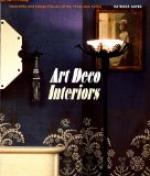Fortunately, of late years a tide has set in which favours simple, well made furniture, designed with fine lines and having special reference to the purposes for which each piece is intended, and to-day our houses can be beautiful even if only very simple and inexpensive furniture is used.
In the Victorian prime, even the carved furniture, so much of which was made in England both for that country and the United States (see Plate XXI), was not of the finest workmanship, compared with carvings of the same time in Belgium, France, Germany and Austria.
To-day Victorian cross-stitch and bead work in chairs, screens, footstools and bell-pulls, artificial flowers of wax and linen, and stuffed birds, as well as Bristol glass in blue, green and violet, are brought out from their hiding places and serve as touches of colour to give some of the notes of variety which good interior decoration demands.
To be fascinating, a person must not be too rigidly one type. There must be moments of relaxation, of light and shade in mood, or one is not charmed even by great beauty. So your perfect room must not be kept too rigidly in one style. To have attraction it must have variety in both line and colour, and reflect the taste of generations of home lovers. The contents of dusty garrets may add piquancy to modern decorations, giving a touch of the unusual which is very charming.
CHAPTER XXV
PAINTED FURNITURE
Painted furniture is, at present, the vogue, so if you own a piece made by the Adam brothers of England, decorated by the hand of Angelica Kauffman, or Pergolesi, from Greek designs, now is the moment to “star” it.
Different in decoration, but equal in charm, is the seventeenth and eighteenth century painted lacquers of Italy, France, China and Japan. In those days great masters laboured at cabinetmaking and decorating, while distinguished artists carved the woodwork of rooms, and painted the ceilings and walls of even private dwellings.
To-day we have reproductions (good and bad) of the veteran types, and some commendable inventions, more or less classic in line, and original in colouring and style of decoration. At times, one wishes there was less evident effort to be original. We long for the repose of classic colour schemes and classic line. In art, the line and the combination of colours which have continued most popular throughout the ages, are very apt to be those with which one can live longest and not tire. For this reason, a frank copy of an antique piece of painted furniture is generally more satisfactory than a modern original.
If you are using dull coloured carpets and hangings, have your modern reproductions antiqued. If you prefer gay, cheering tones, let the painted furniture be bright. These schemes are equally interesting in different ways. It is stupid to decry new things, since every grey antique had its frivolous, vivid youth.




